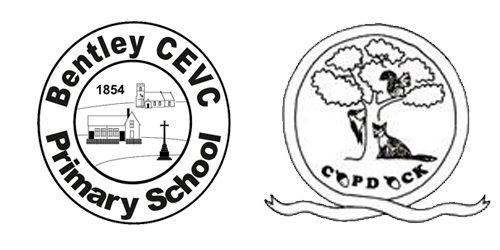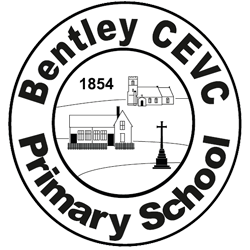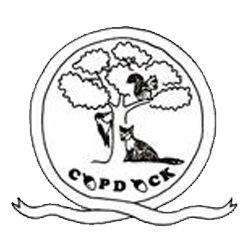Science
Chemistry is the study of the composition, behaviour and properties of matter, and of the elements of the Earth and its atmosphere. Biology is the study of living things. Pysics is the study of matter, forces and motion, sound, light and waves, electricity and magnetism and Earth in Space.
In Phase 1/2 pupils study the Seasons and develop an early conceptual understanding of how day becomes night. An understanding of change over time connects to the study of Plants, including trees. This focus enables children to associate trees as belonging to the plant kingdom and notice the changes deciduous trees go through connected to the seasons. Contrasting that study, pupils learn about Animals, including humans. Non-examples of plants are used to contrast the features of an animal. Pupils are introduced to identifying and classifying Materials. Scientific terms, such as transparent, translucent and opaque are taught explicitly through vocabulary instruction and pupils make further sense by applying it to what they know and then to working and thinking scientifically tasks. The Year 1 children apply their new knowledge while the Year 2 further develop their substantive knowledge before applying this. As pupils progress through Phase 1/2, new knowledge is integrated with pre-existing understanding. New substantive knowledge is constructed and made sense of through Working and Thinking Scientifically tasks.
In Phase 3/4 the unit on Rocks is studied and connected with prior knowledge from ‘Everyday Materials’ in Phase 1/2. A study of Animals, including humans is built upon from Phase 1/2 and contrasts the physical features with the functions they perform, including the skeleton and muscles. Forces and Magnets are introduced and connect with Phase 1/2 materials, including twisting, bending and squashing. Contact and non-contact forces are taught and understanding applied through Working and Thinking Scientifically. The abstract concept of Light is made concrete through knowing about light sources and shadows. Plants are studied to develop a more sophisticated understanding of their parts and functions, including pollination. A study of Living Things and their Habitats pays close attention to classification and is directly taught using prior knowledge to ensure conceptual frameworks are secure. Explicit vocabulary instruction supports pupils to deconstruct words for their component meaning, for example invertebrate. Animals, plants and environments are connected in this study with a summary focusing on positive and negative change. Electricity is introduced. Substantive knowledge is taught so that pupils acquire understanding about electrical sources, safety and components of a single loop circuit. Practical tasks give pupils the opportunity to think using disciplinary knowledge in the context of variables. Pupils make sense of what they know by testing, proving and disproving hypotheses. This knowledge is connected to Design and Technology by designing and creating an electrical game. Animals Including Humans focuses on the sequence of digestion, from the mouth to excretion. Misconceptions, such as digestion begins in the stomach, are pre-empted, limited and represented as non-examples. States of Matter and Sound are taught using knowledge of the particle theory. Acquiring substantive knowledge about ‘states’ of matter supports pupils to understand how solids, liquids and gases behave. This knowledge is connected further to geographical studies of the water cycle and life processes. Practical scientific tasks and tests help pupils build a coherent understanding of the particle theory by applying what they know through structured scientific enquiry. Misconceptions, such as ‘liquid particles are slightly more separated than gas and less compacted than solids’ are addressed.
In Phase 5/6 in the study of Properties and Changes of Materials, it is important that pupils reuse and draw upon their understanding of states of matter. This prior content eases the load on the working memory to process and make sense of new knowledge, including solutions, mixtures, reversible and irreversible changes. Change is also studied within Animals, Including Humans, focusing on growth and development of humans and animals. Earth in Space develops the conceptual understanding of our place in the universe. This study unwraps misconceptions, including the moon changing shape, the sun moving across the sky and how seasons occur. A study of Forces sophisticates the substantive knowledge acquired in Phase 1/2 and Phase 3/4. New content, including air resistance and water resistance is studied. Force multipliers, such as levers are studied to understand how we can be efficient with effort. For example, a spanner with a long handle multiplies the force and makes it easier to turn a bolt than spanner with a shorter handle. Simple machines, such as pulleys are also studied as force multipliers – they move the load through a greater distance with the same energy being used. Enhancing this study of Forces, pupils learn about Galileo Galilei 1564 - 1642 (considered the father of modern science). Living Things and their Habitats focuses on differences in life cycles of living things and how they reproduce. This study also contrasts previous scientific thinking. Pupils contrast how people in the past thought and constructed understanding, in the absence of scientific evidence, to explain things they didn’t understand. Maria Merion is the significant scientist studied, she observed closely and carefully drew insects undergoing biochemical metamorphosis. David Attenborough describes Maria Merion as one of the most important contributors to the field of entomology. A further study of Living things and their habitats enables pupils in Phase 5/6 to revisit and add to their understanding of classification through the taxonomy created by Carl Linnaeus. More complex animals are studied, including invertebrates such as Myriapods and Echinodermata (starfish and Sea urchins) as well as Arthropods such as Crustacea, Arachnids, and Insects. Light is revisited and taught with advanced substantive knowledge. This is physics study with a focus on the properties of light, not the biology of the eye. The study of Animals, including humans enables pupils to add new knowledge to their mental models of biological systems. Circulation, the components of blood and the mechanism of the heart is connected to healthy living through diet and exercise. Further retrieval learning modules are deployed, so that pupil knowledge can be advanced and sophisticated to increase their depth of understanding. Electricity is enhanced with an advanced study of electrical circuits. New substantive knowledge is acquired in the context of the particle theory, which was previously studied. Working and thinking scientifically tasks help to deepen and make sense of new learning, such as the concept of electricity and the way we explain it using terms such as charge, potential difference and flow. Evolution and Inheritance introduces two significant scientists - Charles Darwin and Alfred Wallace as pioneers of scientific thinking in the field of evolution. This study draws on how misconceptions may have been arrived at to explain the past and how theories explain significant change, over time. Substantive concepts, including adaption and variation are taught explicitly through vocabulary and clarity is achieved through worked examples. This supports pupils to use this substantive knowledge in a disciplinary way.
Our science curricuulum promotes and develops diversity through the study of significant scientists such as Maria Merion, a pioneering woman of science. Furthermore, our curriculum prepares children for study beyond KS2 by developing early concepts which are studied at GCSE level (please see the Long Term Sequence below).


